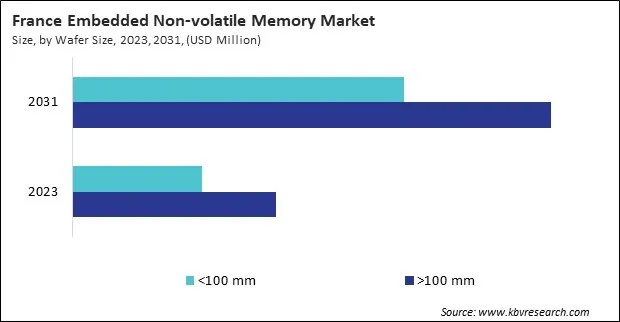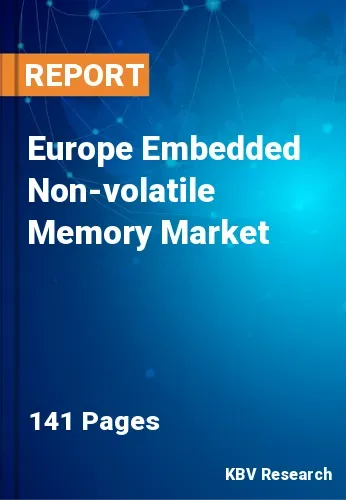The Europe Embedded Non-volatile Memory Market would witness market growth of 11.1% CAGR during the forecast period (2024-2031).
The Germany market dominated the Europe Embedded Non-volatile Memory Market by Country in 2023, and would continue to be a dominant market till 2031; thereby, achieving a market value of $440.1 million by 2031. The UK market is exhibiting a CAGR of 10.2% during (2024 - 2031). Additionally, The France market would experience a CAGR of 11.9% during (2024 - 2031).

The demand for smaller, more efficient, and more potent devices has resulted in a substantial shift toward the integration of more features and capabilities into a single chip over the past decade. This trend is evident in the consumer electronics sector, where devices like smartphones, tablets, and wearables have become essential tools in daily life. Memory solutions that are able to store and process huge amounts of data in a timely and effective manner while simultaneously lowering power consumption are required for these devices with the goal of maximizing efficiency. This memory provides an ideal solution, offering the ability to store critical data directly on the chip, which enhances performance and reduces the need for additional external memory components.
The increasing adoption of the Internet of Things (IoT) is another significant factor driving the market. For instance, in 2022, the number of active IoT endpoints increased by 18% to 14.3 billion, as indicated by official statistics. The use of this technology is becoming increasingly integrated into the routines of individuals, ranging from the creation of smart homes and cities to the improvement of medical care and agricultural practices. IoT devices require memory solutions that are compact, efficient, and capable of storing data reliably over long periods. This memory fits these requirements perfectly, offering the durability, power efficiency, and data retention needed for IoT devices to function effectively in various environments.
The BFSI (Banking, Financial Services, and Insurance) sector handles vast amounts of transaction data daily in the United Kingdom. eNVM provides the high-capacity storage and rapid data access required to process these large volumes efficiently. According to the UK government, the financial and professional services (FPS) industry plays a central role in the country’s development, contributing £278 billion in economic output, which represents 12% of the UK’s total economic output, and generating £100 billion in tax revenue. Germany's expanding data center industry increasingly relies on advanced memory solutions to efficiently manage and process large volumes of data. Next-generation embedded non-volatile memory technologies offer the speed and capacity necessary for high-performance data centers. According to the International Trade Administration (ITA), Germany's IT subsectors in 2022 generated significant revenues, specifically, USD 45.3 billion in services, USD 34.9 billion in IT hardware, and USD 34.1 billion in software. Germany's overall Information Technology (IT) sector has seen steady growth, with total revenue rising from USD 76.4 billion in 2007 to an estimated USD 141.6 billion in 2023. Thus, the growing BFSI sector and the expansion of the IT industry in the region are key factors driving market growth.
Free Valuable Insights: The Global Embedded Non-volatile Memory Market will Hit USD 8.8 Billion by 2031, at a CAGR of 11.3%
Based on Wafer Size, the market is segmented into >100 mm and <100 mm. Based on Product, the market is segmented into eFlash, eE2PROM, FRAM, and Other Product. Based on Application, the market is segmented into BFSI, Information Technology, Consumer Electronics, Telecommunications, Government, and Others Application. Based on countries, the market is segmented into Germany, UK, France, Russia, Spain, Italy, and Rest of Europe.

By Wafer Size
By Product
By Application
By Country
Our team of dedicated experts can provide you with attractive expansion opportunities for your business.

